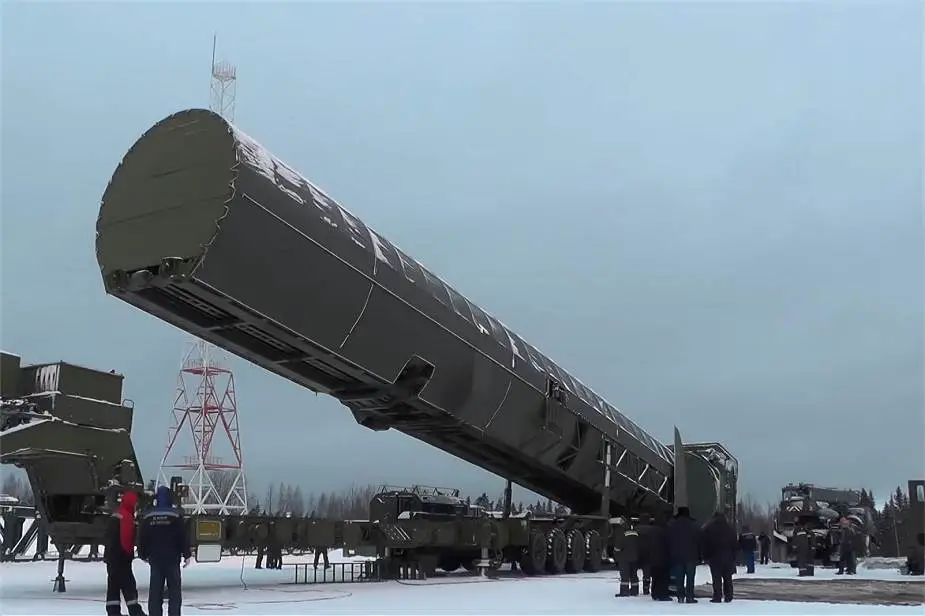Breaking news
Russia to start soon flight tests of RS-28 Sarmat ICBM InterContinental Ballistic Missile.
Flight development tests of the new RS-28 Sarmat strategic silo-based heavy multi-stage liquid-fuel intercontinental ballistic missile (ICBM) will begin soon, the Army Standard writes. Sarmat is to replace R-36M2 Voevoda missiles, which have been the most powerful in the world and operational since 1970s.
Follow Army Recognition on Google News at this link

The New Russian-made silo-based RS-28 Sarmat ICBM InterContinental Ballistic Missile. (Picture source Russian MoD)
The Russian Defense Ministry said 58 R-36M2 missiles were deployed in the country by the end of 1998. They carried four types of reentry vehicles.
Sarmat considerably exceeds the predecessor. Some of its characteristics were disclosed at the Army-2019 forum. The new missile weighs 208.1 tons, the payload is close to 10 tons and the fuel is 178 tons. The range of Sarmat is 18 thousand kilometers. No foreign missile of the class has comparable characteristics, including the US Ground-Based Strategic Deterrent (GBSD), which is at the initial stage of design. The missiles are to be supplied in late 2020s.
The range, speed and payload are not the only Sarmat advantages. A heavy ICBM has to effectively break through existing and prospective missile defense. The circular probable error of R-36M2 is 500 meters. It is nothing for an ICBM. The missile is equipped with a set of means against missile defense, including dummy targets.
Open sources said Sarmat has completely new means to counter missile defense. Its active flight stage, when the missile accelerates and is visible and vulnerable to missile defense, has been reduced.
The shorter acceleration section is important for the breakthrough of missile defense, as the separation of reentry vehicles and discharge of dummy targets are possible only after the boost. Sarmat engines rapidly boost the missile to the safe zone and make it invulnerable for the missile defense until it reaches the main flight trajectory.
The engines provide a longer range to the ICBM. It can fly by unpredictable routes and bypass missile defense areas. It can fly over the South Pole and approach targets from directions that are not envisaged for interception on the US territory.
The design focused not on maximum weight of reentry vehicles, but the bypass of the missile defense by a smaller number of vehicles.
Sarmat acceptance into service does not violate any Russian-US agreements on strategic stability. The new ICBM will gradually replace Voevoda and there will be no major changes in numbers. In the future, the number of Sarmat on combat duty will equal the current strength of Voevoda. They will be deployed in the same silos, which are freed from outdated ICBM.
The silos are properly protected and can sustain a nuclear explosion. In 2013, the Strategic Missile Forces began to provide additional protection to them.
Sarmat can carry a line of reentry vehicles, including Avangard gliders. UR-100N-UTTKh ICBM with the gliders are on combat duty in the Dombarovskaya division of the strategic forces. However, experts say Avangard was created specifically for Sarmat.
After trials and acceptance into service, Sarmat can be armed with maneuvering reentry vehicles, which are impossible to intercept.


























